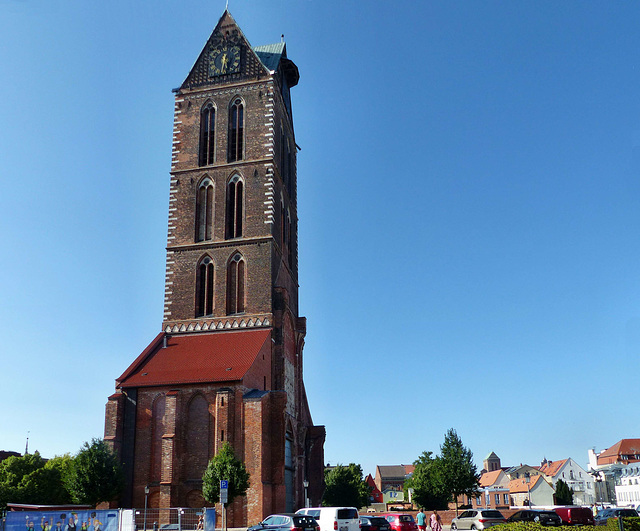Wismar - Nikolaikirche
Wismar - Nikolaikirche
Wismar - Nikolaikirche
Wismar - Nikolaikirche
Wismar - Nikolaikirche
Wismar - Nikolaikirche
Wismar - Nikolaikirche
Wismar - Nikolaikirche
Wismar - Nikolaikirche
Wismar - Nikolaikirche
Wismar - Nikolaikirche
Wismar - Nikolaikirche
Wismar - Nikolaikirche
Wismar - Nikolaikirche
Wismar - Nikolaikirche
Wismar - Nikolaikirche
Wismar - Nikolaikirche
Wismar - Nikolaikirche
Wismar - Nikolaikirche
Wismar - Nikolaikirche
Wismar - Archidiakonat
Wismar - Alter Schwede
Wismar - Approaching St. Georgen
Wismar - Marienkirche
Dorf Mecklenburg - Dorfkirche
Dorf Mecklenburg - Dorfkirche
Schwerin - Zigarrenhaus Preussler
Schwerin - Dom
Schwerin - Dom
Schwerin - Dom
Schwerin - Dom
Schwerin - Dom
Schwerin - Dom
Schwerin - Dom
Mölln - St. Nicolai
Mölln - St. Nicolai
Mölln - St. Nicolai
Mölln - St. Nicolai
Mölln - St. Nicolai
Mölln - St. Nicolai
Mölln - St. Nicolai
Mölln - St. Nicolai
Mölln
Detmold - Sex toys
Detmold - Trout baits
Location
See also...
Keywords
Authorizations, license
-
Visible by: Everyone -
All rights reserved
-
31 visits
Wismar - Marienkirche


Slavic Obodrites lived in the area, where Wismar is now, until the end of the 12th century.
The exact date of the city's foundation is not clear, it had civic rights already in 1229 when migrants from Holstein and Westphalia settled here. The "Lübsches Stadtrecht" (town law) was confirmed in 1266. In 1259 Wismar joined a defensive agreement with Lübeck and Rostock, in order to counter the numerous Baltic pirates. Subsequently, more cities would agree to cooperate as commerce and trade were increasingly coordinated and regulated. These policies would provide the basis for the development of the "Hanseatic League". By the 13th and 14th centuries, Wismar had grown into a flourishing Hanseatic trading hub.
In 1632, during the Thirty Years' War, Sweden conquered the city, and the Swedish Crown received in the Peace of Westphalia in 1648 after the end of the Thirty Years' War.
Swedish rule over Wismar ended de facto in 1803 when Sweden pledged the city to the Duchy of Mecklenburg-Schwerin for 99 years. Formally, Wismar reverted to Germany in 1903 and Sweden waived its right to redeem the pledge.
In WW II Wismar was heavily bombed and destroyed by Allied air raids. In April 1945, the church was severely damaged by aerial mines. The roofing was lost and all the vaults, the south aisle and the south porch collapsed.
The "Marienkirche" was built around 1260-70 as a hall church with a west tower. The width of the nave was 36 metres, the height of the vaults was about 16 metres. These dimensions testify to the economic power of the city in the 13th century.
Although there was no immediate danger of collapse the nave and choir of St. Mary's Church were blown up in 1960 under protest from numerous citizens. The tower could not be removed because of its importance as a sea mark.
The Marienkirche was richly endowed through donations. Several pieces of the furnishings were saved in the turmoil of WWII, but a large part was also destroyed.
The Triumphal Cross from here is in the Schwerin Cathedral since 1990. Other pieces are now in Wismar's Nikolaikirche.
The exact date of the city's foundation is not clear, it had civic rights already in 1229 when migrants from Holstein and Westphalia settled here. The "Lübsches Stadtrecht" (town law) was confirmed in 1266. In 1259 Wismar joined a defensive agreement with Lübeck and Rostock, in order to counter the numerous Baltic pirates. Subsequently, more cities would agree to cooperate as commerce and trade were increasingly coordinated and regulated. These policies would provide the basis for the development of the "Hanseatic League". By the 13th and 14th centuries, Wismar had grown into a flourishing Hanseatic trading hub.
In 1632, during the Thirty Years' War, Sweden conquered the city, and the Swedish Crown received in the Peace of Westphalia in 1648 after the end of the Thirty Years' War.
Swedish rule over Wismar ended de facto in 1803 when Sweden pledged the city to the Duchy of Mecklenburg-Schwerin for 99 years. Formally, Wismar reverted to Germany in 1903 and Sweden waived its right to redeem the pledge.
In WW II Wismar was heavily bombed and destroyed by Allied air raids. In April 1945, the church was severely damaged by aerial mines. The roofing was lost and all the vaults, the south aisle and the south porch collapsed.
The "Marienkirche" was built around 1260-70 as a hall church with a west tower. The width of the nave was 36 metres, the height of the vaults was about 16 metres. These dimensions testify to the economic power of the city in the 13th century.
Although there was no immediate danger of collapse the nave and choir of St. Mary's Church were blown up in 1960 under protest from numerous citizens. The tower could not be removed because of its importance as a sea mark.
The Marienkirche was richly endowed through donations. Several pieces of the furnishings were saved in the turmoil of WWII, but a large part was also destroyed.
The Triumphal Cross from here is in the Schwerin Cathedral since 1990. Other pieces are now in Wismar's Nikolaikirche.
Paolo Tanino, Alexander Prolygin have particularly liked this photo
- Keyboard shortcuts:
Jump to top
RSS feed- Latest comments - Subscribe to the comment feeds of this photo
- ipernity © 2007-2024
- Help & Contact
|
Club news
|
About ipernity
|
History |
ipernity Club & Prices |
Guide of good conduct
Donate | Group guidelines | Privacy policy | Terms of use | Statutes | In memoria -
Facebook
Twitter

Sign-in to write a comment.